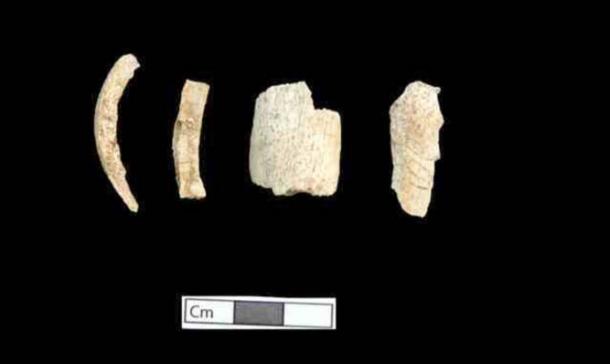

The Greek Ministry of Culture has announced the long-awaited results of the analysis on the bones found inside the 4th century BC tomb uncovered in Amphipolis in northern Greece, and the news is quite unexpected – the bones belong to not one, but five individuals, pointing to the likelihood that it is a family tomb. The tomb is located within Kasta Hill in what was once the ancient city of Amphipolis, conquered by Philip II of Macedon, father of Alexander the Great, in 357 BC. Experts have known about the existence of the burial mound in Amphipolis, located about 100km northeast of Thessaloniki, since the 1960s, but work only began in earnest there in 2012, when archaeologists discovered that Kasta Hill had been surrounded by a nearly 500-meter wall made from marble. And only in the last few months did they discover the incredible chambers decorated with marble sphinxes and caryatids, an intricate mosaic floor, and a limestone sarcophagus containing hundreds of bone fragments.

According to the Ministry’s Press Release, archaeologists recovered a total of 550 bone fragments, both crushed and intact, including a skull in good condition. After a meticulous process of piecing the fragments together, scientists identified 157 complete bones. Following the macroscopic study of bone material, which was undertaken by a multidisciplinary team from the Universities of Aristotle and Democritus, researchers were able to determine that the minimum number of individuals is five – a woman aged around 60 years, two men aged 35-45 years, a newborn infant, and the cremated remains of another individual of unknown age and gender. In addition, they found a number of animal bones, most likely belonging to a horse.
Person 1: Female, approximately 60 years
Scientists were able to identify person 1 as female based on the pelvic bones, the bones of the skull, the mandible, and the morphological features of the bones, while age was determined based on the loss of posterior teeth, degenerative lesions, particularly in the spine, and the presence of metabolic diseases such as osteoporosis and frontal hyperostosis. Her height is estimated at 157cm. Most of the bones found can be attributed to the female, and they were located approximately 1 meter above the floor of the cist.

Persons 2 and 3: Two men, 35 to 45 years
Two of the individuals identified are known to have been men, one around 35 years of age, and the other closer to 45 years of age. The younger of the two men, whose height is estimated at 168cm, bears traces of cut marks on the left upper thoracic spine, two sides and cervical vertebra. His injuries are consistent with violent injury caused by a sharp instrument, such as a knife, which are known to have caused his death since no healing indications could be distinguished. The slightly older man, whose bones were found higher than the first man, measures around 162cm in height and has evidence of a fully healed fracture in his right radius, close to the right wrist. Both men show degenerative osteoarthritis and spondylitis.

Person 4: Newborn infant
The fourth individual identified was a newborn infant, whose sex could not be determined. The determination of age was made based on the length and width of the left humerus and left mandible.

Person 5: Cremated individual of unknown age and sex
The fifth person is represented by only a few burnt fragments. While age and sex cannot be determined, the bones are believed to belong to an adult individual.

The scientific team will continue to carry out in-depth studies of the bones, including DNA analysis, to obtain more detailed information about the individuals including their diet, their affinity and place of origin, whether they grew up in Amphipolis or had moved from elsewhere, when they were buried/cremated, and whether the individuals are related to each other. The hope is that the results will enable the researchers to piece together the social and historical context and finally determine the identity of the individuals buried inside this incredibly important funerary monument.
Featured images: Credit: Greek Ministry of Culture.
Source: ancient-origins.net





